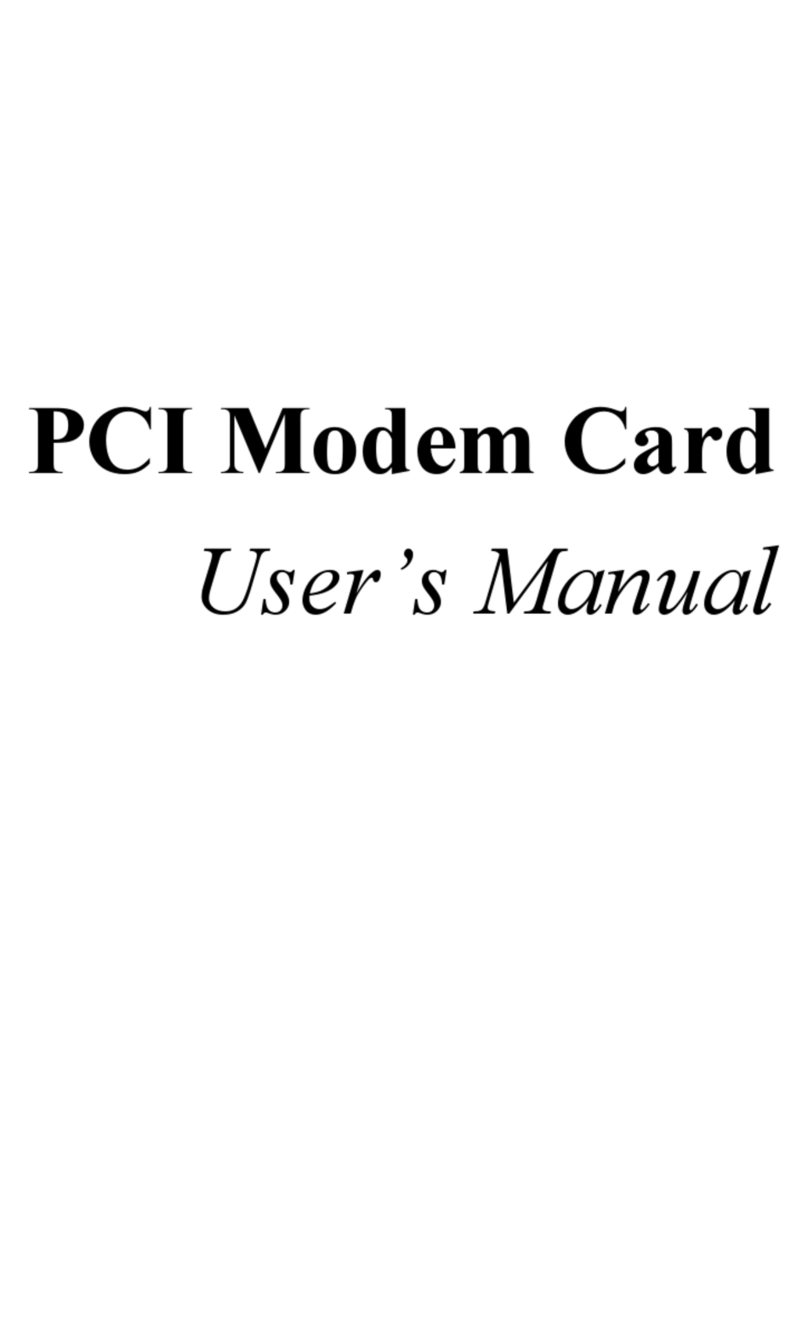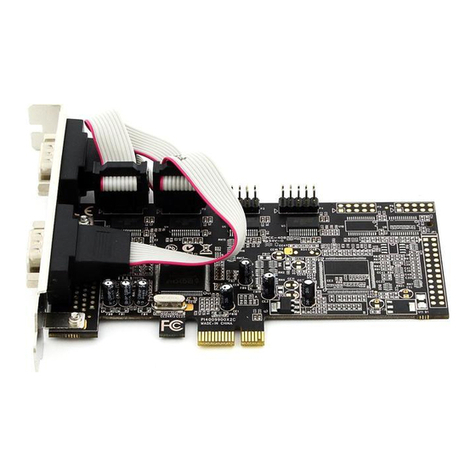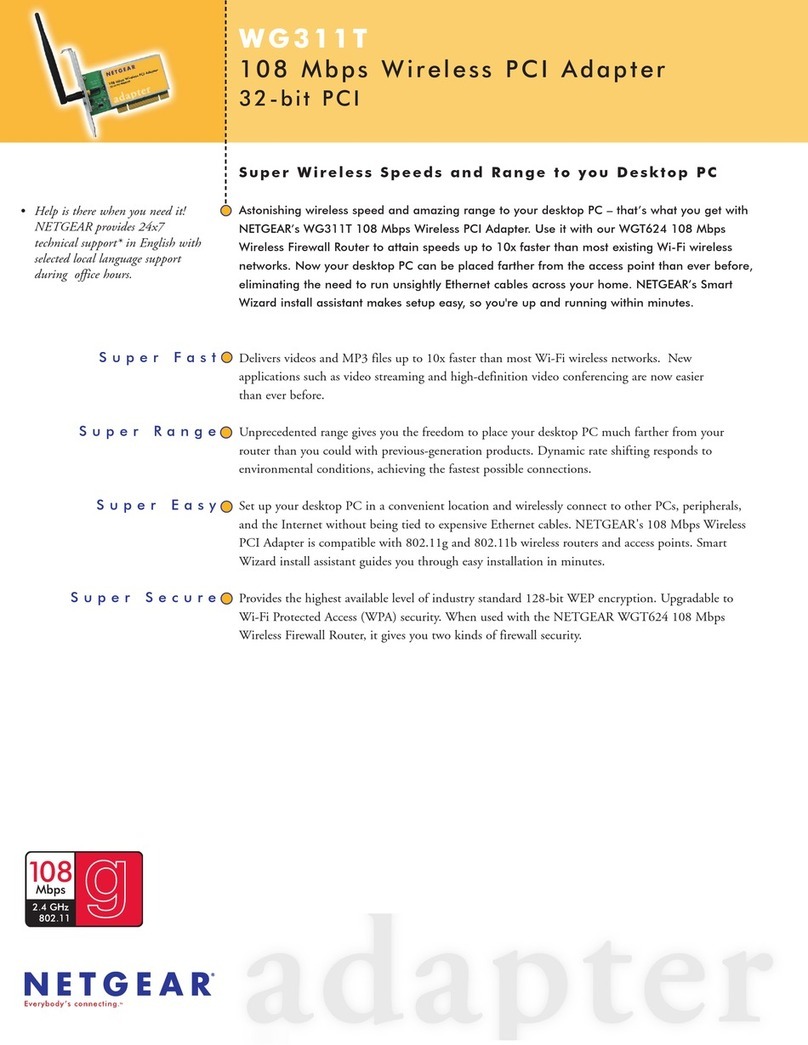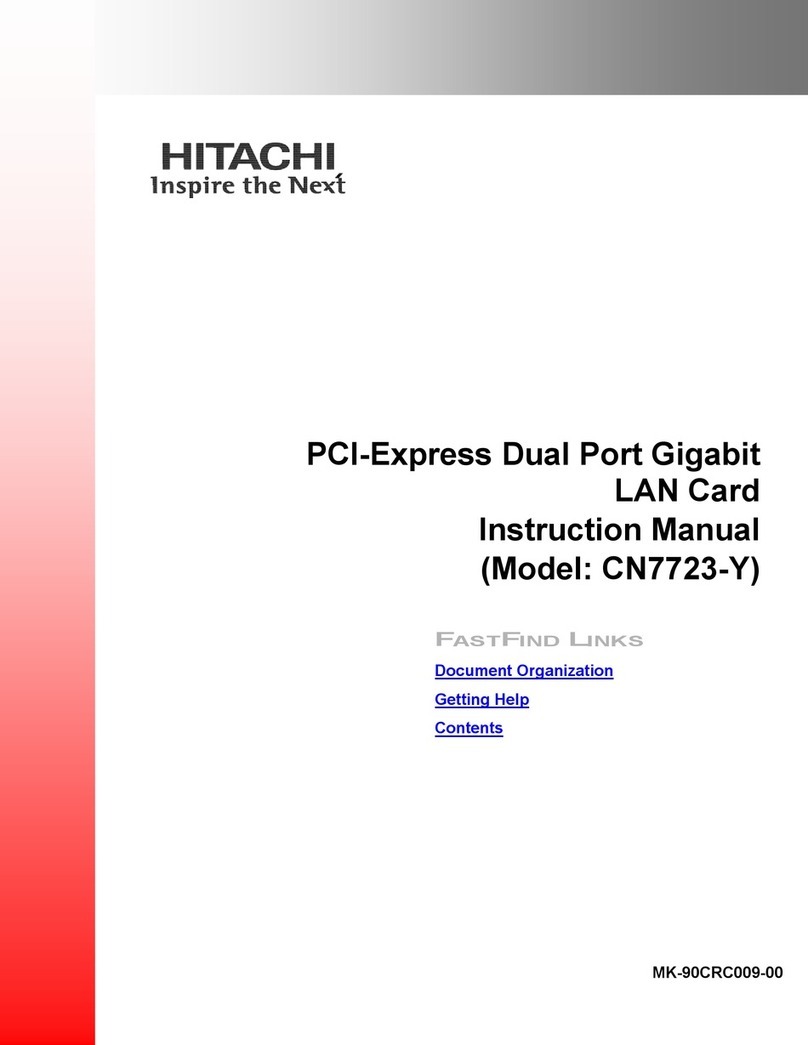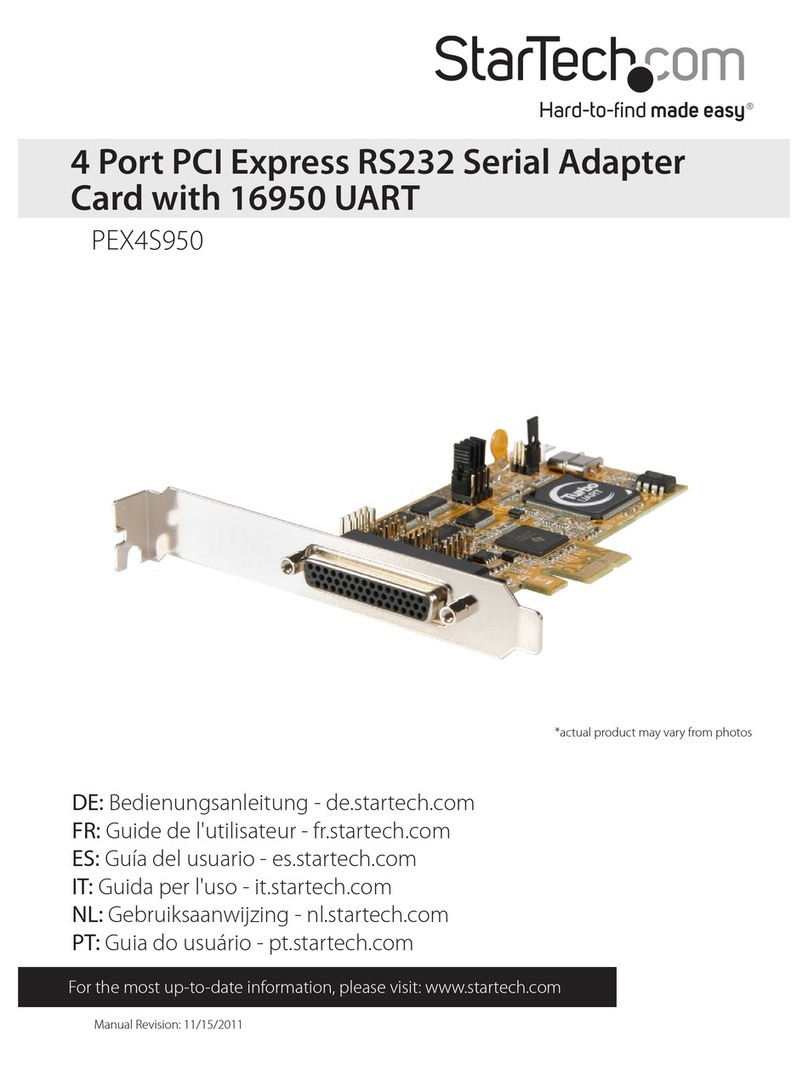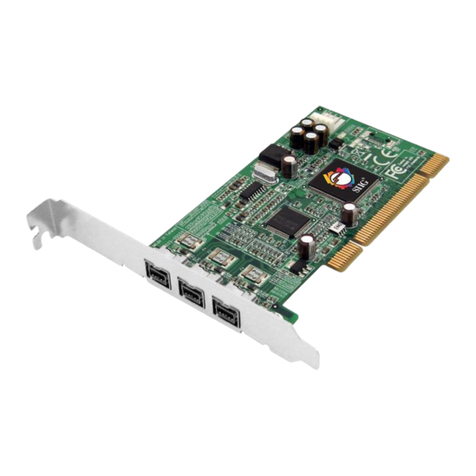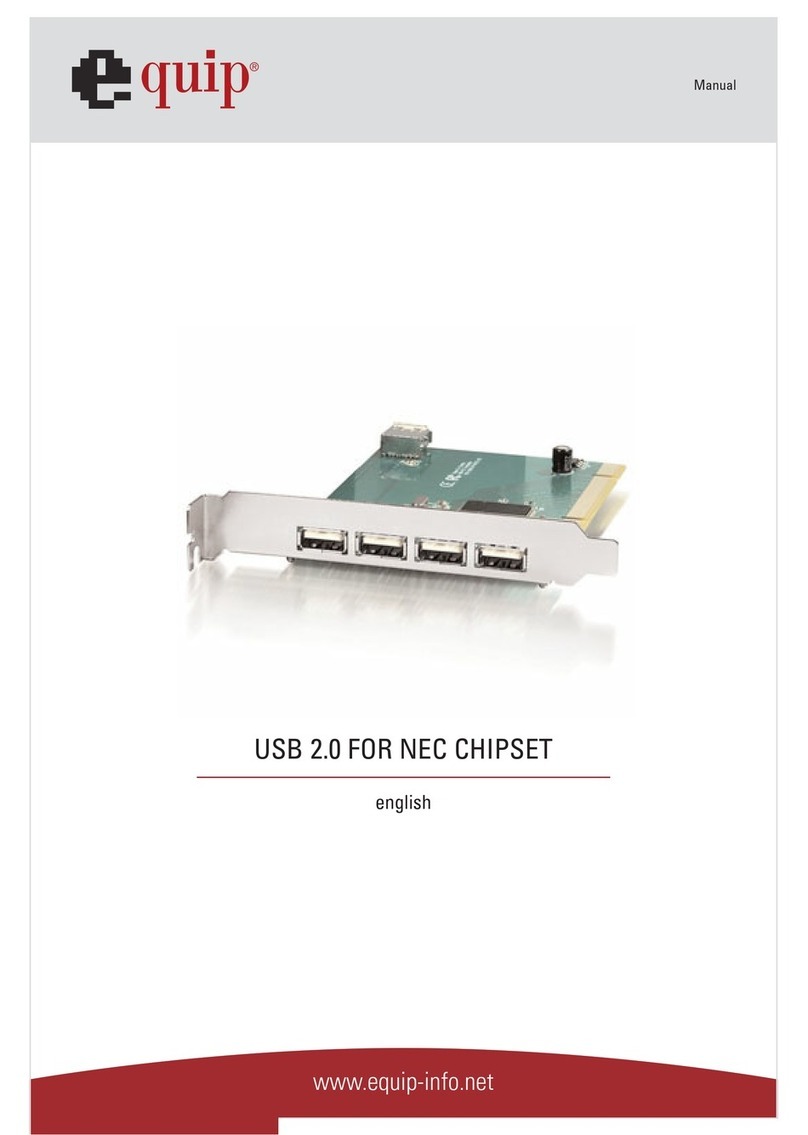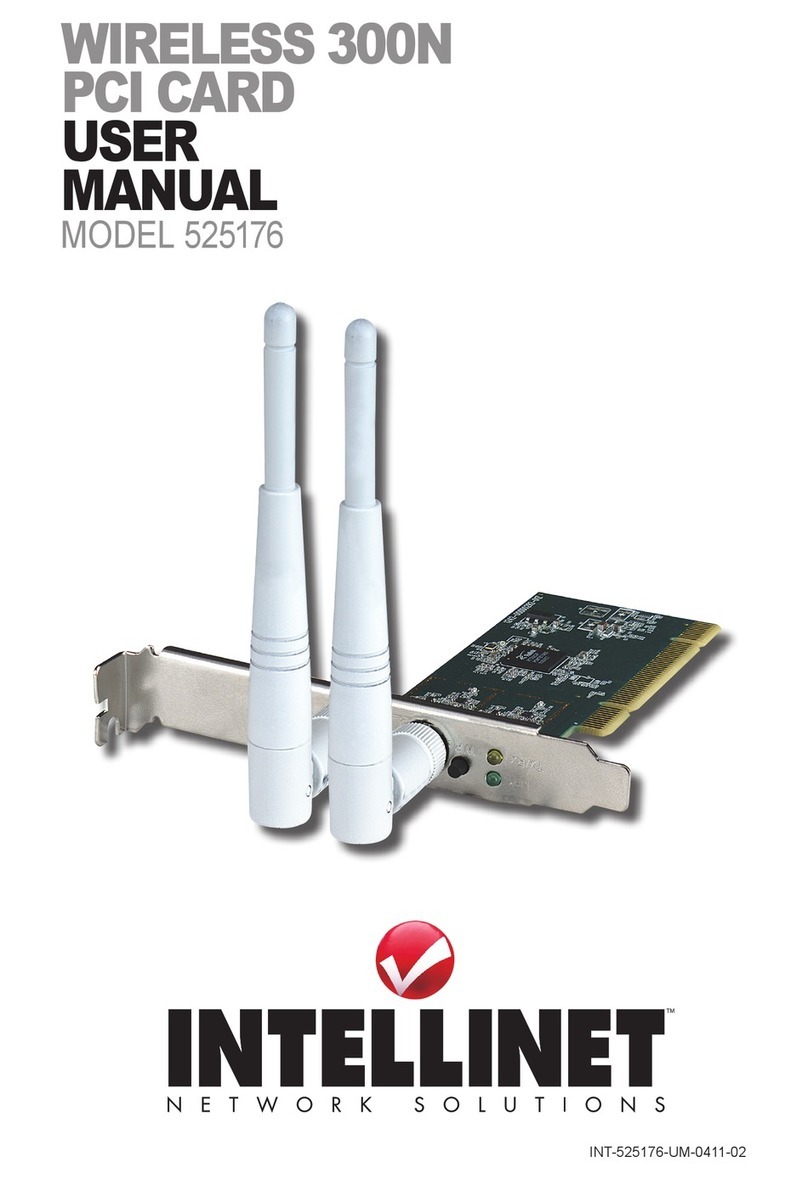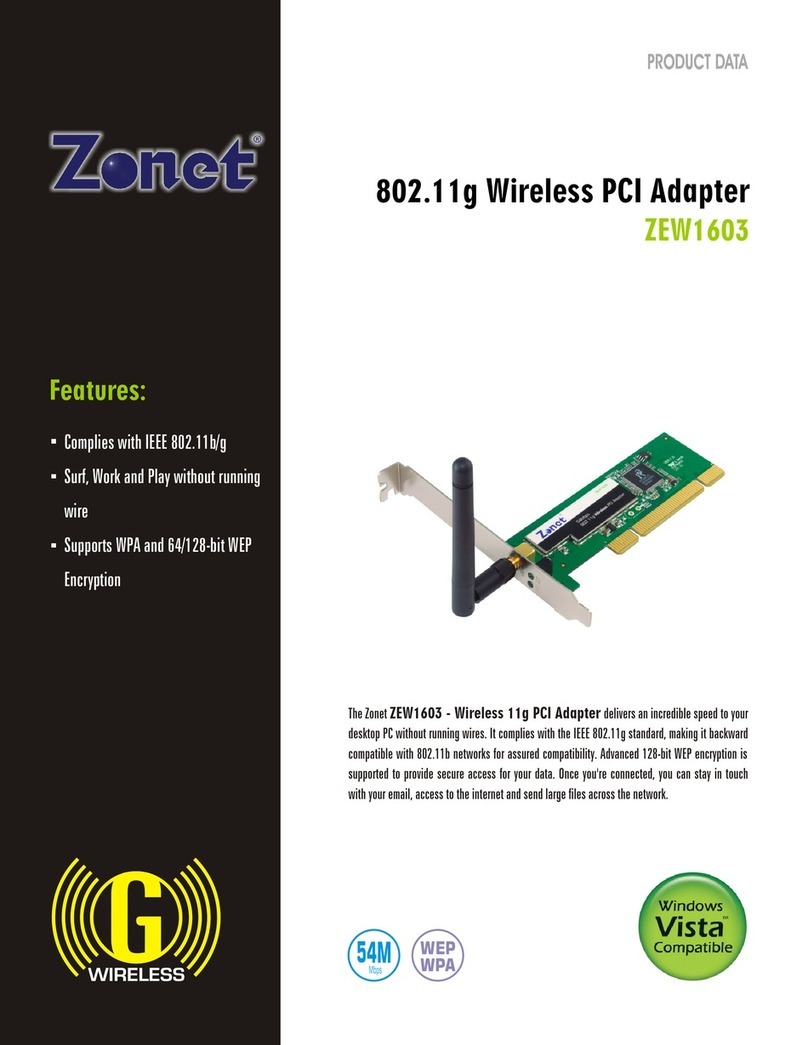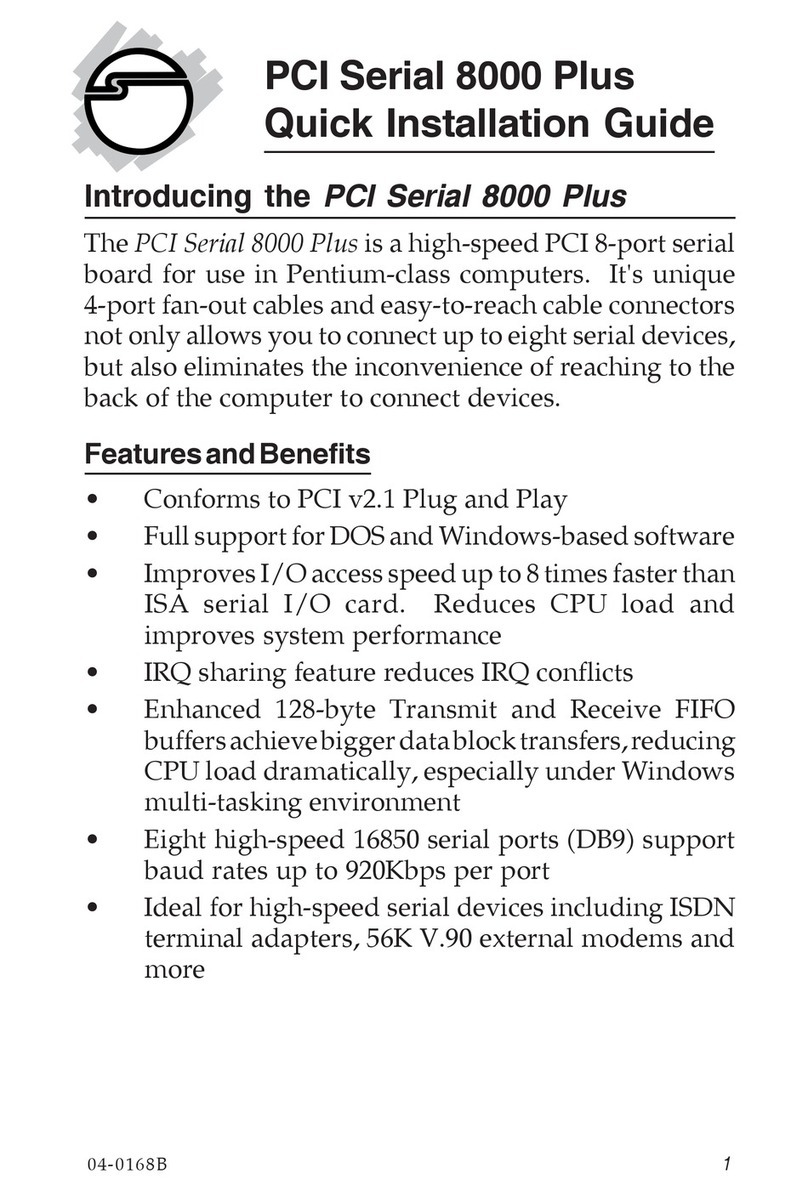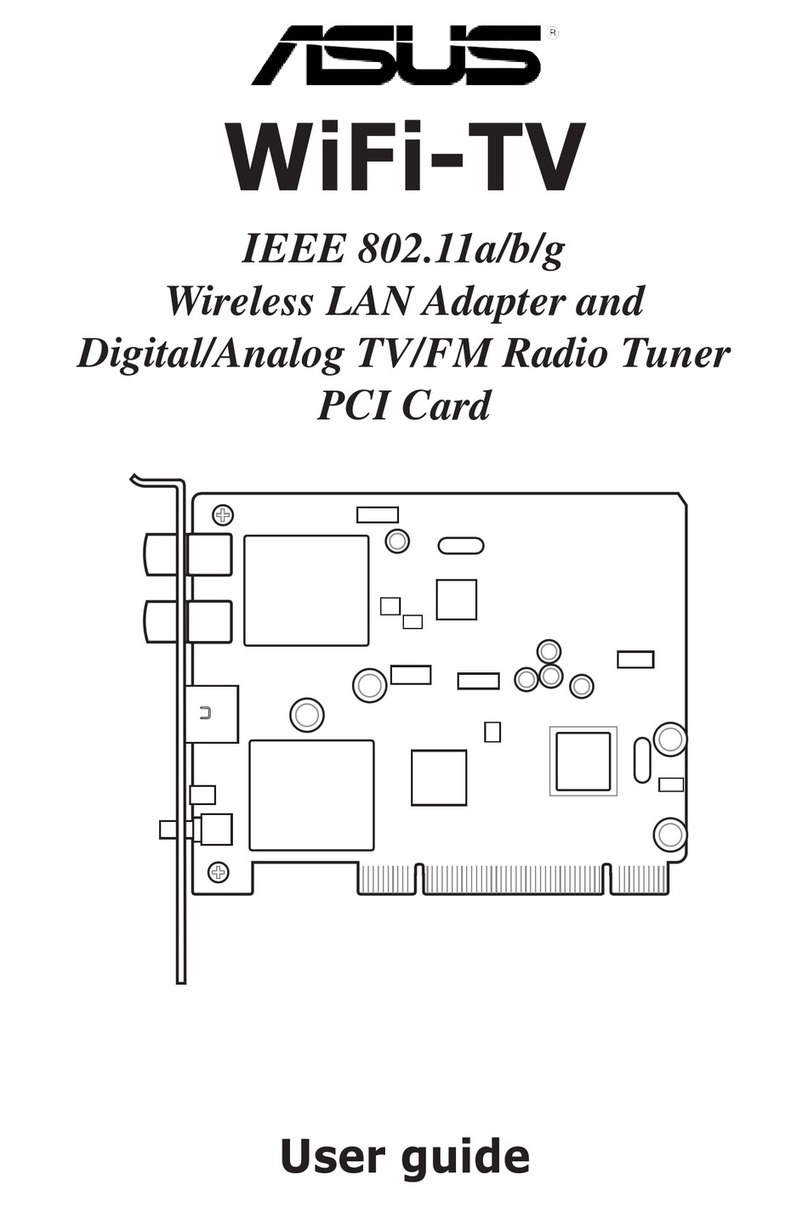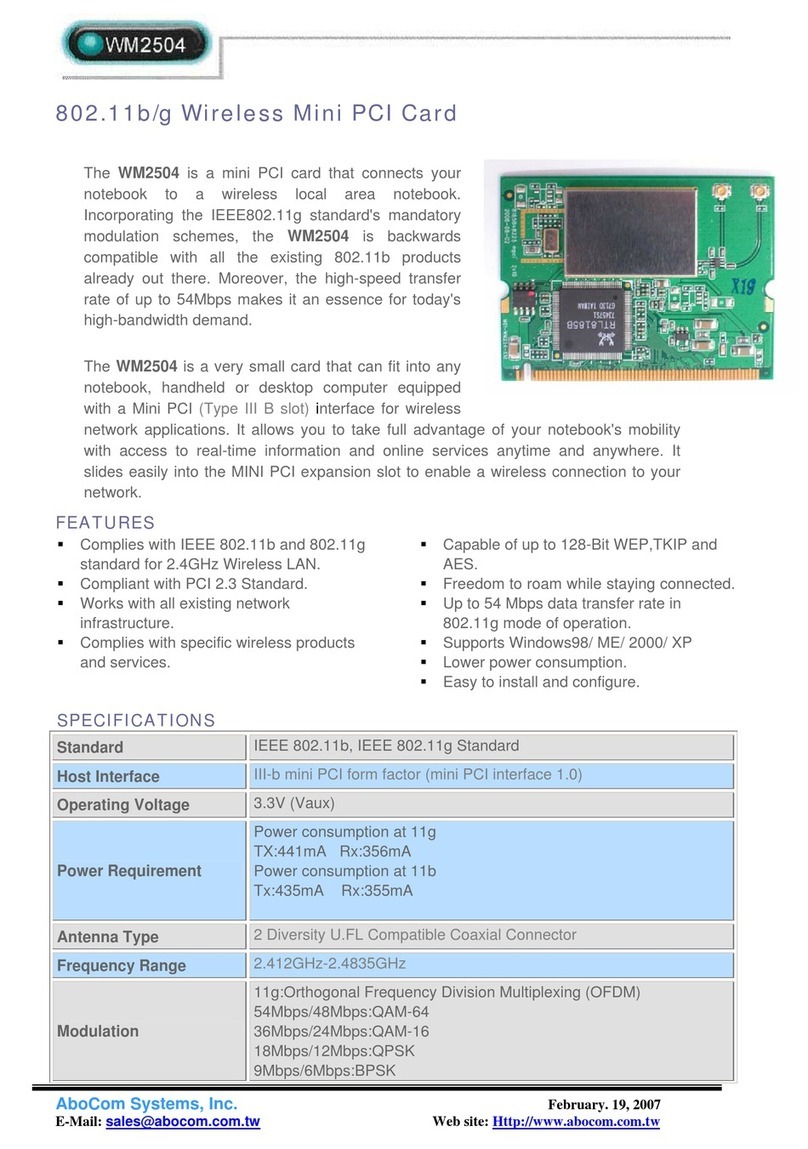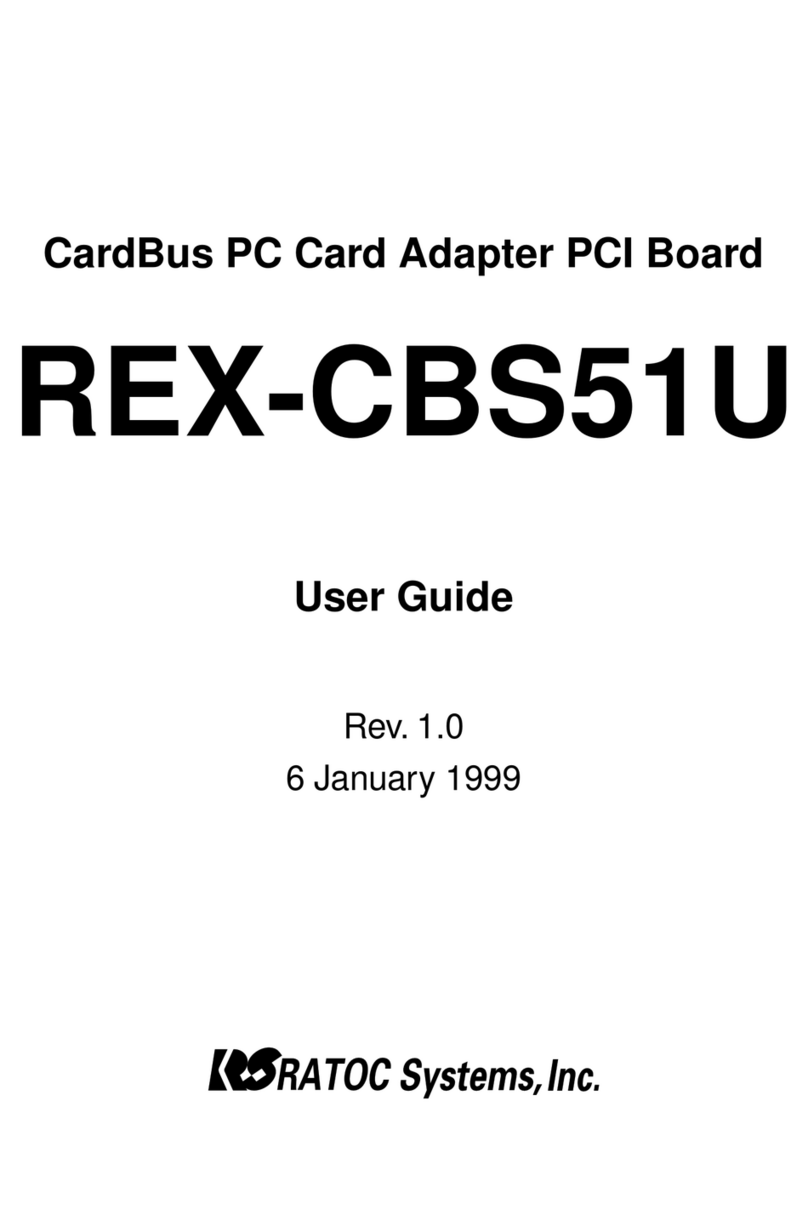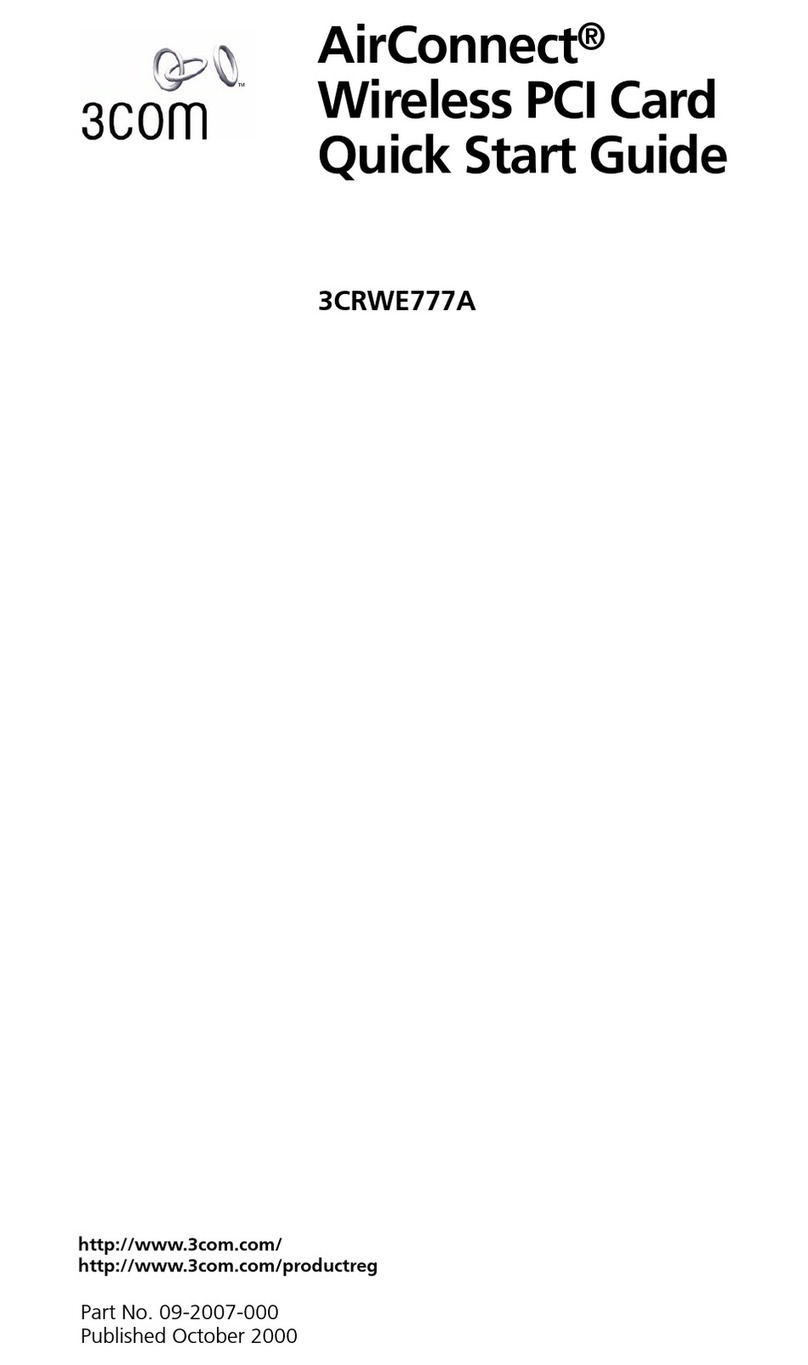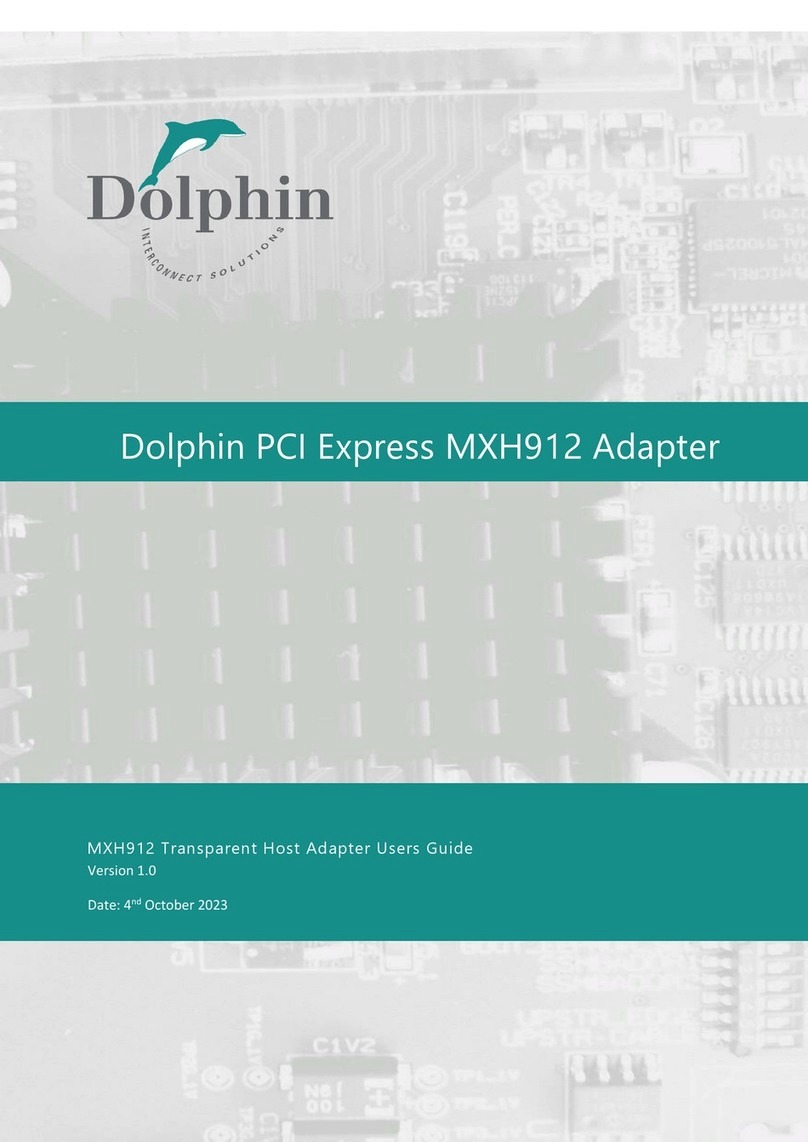Goepel G PCIe 6281 User manual

GPCIe6281
Manual (Original documentation)

Copyright © 2019 GOEPELelectronics GmbH. All rights reserved.
The software described in this manual as well as the manual itself are supplied under license and may
be used or copied only in accordance with the terms of the license. The customer may make one copy
of the software for safety purposes.
The contents of the manual is subject to change without prior notice and is supplied for information
only. Hardware and software might be modified also without prior notice due to technical progress.
In case of inaccuracies or errors appearing in this manual, GOEPELelectronics GmbH assumes no lia-
bility or responsibility.
Without the prior written permission of GOEPELelectronics GmbH, no part of this documentation
may be transmitted, reproduced or stored in a retrieval system in any form or by any means as well as
translated into other languages (except as permitted by the license).
GOEPELelectronics GmbH is neither liable for direct damages nor consequential damages from the
company's product applications.
GOEPEL electronics GmbH
Goeschwitzer Str. 58 / 60
D-07745 Jena
Tel.: +49-3641-6896-0
Fax: +49-3641-6896-944
E-Mail: [email protected]
http://www.goepel.com
Version: 1.0.0 / Printed: 12/11/2019
All product and company names appearing in this manual are trade names or registered trade names
of their respective owners.

GPCIe6281
GPCIe6281 iii
Table of Contents
1Introduction ................................................................................................................................ 1
1.1Notes on this document ...................................................................................................... 1
1.2Intended Use .................................................................................................................... 1
1.3EMC Protection Measures .................................................................................................... 2
1.4EU Declaration of Conformity ............................................................................................... 2
1.5General Safety Regulations .................................................................................................. 2
1.6Liability and Warranty Exclusion ........................................................................................... 2
1.7Supplied Accessories .......................................................................................................... 3
2Commissioning ............................................................................................................................ 4
2.1System Requirements ......................................................................................................... 4
2.2Hardware Installation ......................................................................................................... 4
2.3Driver Installation ............................................................................................................... 4
2.3.1Windows Device Driver ............................................................................................. 4
2.3.2G-API ..................................................................................................................... 4
2.4Network Configuration ........................................................................................................ 5
2.5Firmware Update ............................................................................................................... 7
2.6Change of the Transceiver ................................................................................................... 7
3Technical Description .................................................................................................................... 8
3.1Product Description ........................................................................................................... 8
3.2Overview of GPCIe6281 Multibus Controller ........................................................................... 9
3.3Technical Specifications .................................................................................................... 10
3.3.1General Specifications ............................................................................................ 10
3.3.2General Electrical Specifications ............................................................................... 10
3.4Design and Function ......................................................................................................... 10
3.4.1Block Diagram ....................................................................................................... 11
3.4.2Pin Assignment ...................................................................................................... 11
3.4.3LAN/ Ethernet ........................................................................................................ 12
3.4.4LEDs/ Status Indication ........................................................................................... 13
3.4.5Power Supply ........................................................................................................ 13
3.4.6Galvanic Isolation ................................................................................................... 13
3.4.7SYNC .................................................................................................................... 13
3.5Onboard Interfaces ........................................................................................................... 14
3.5.1CAN/ CANFD ......................................................................................................... 15
3.5.2LIN/ K-Line ............................................................................................................ 15
3.5.3FlexRay ................................................................................................................ 16
3.5.4Automotive Ethernet ............................................................................................... 16
3.5.5Digital IO .............................................................................................................. 17
3.5.6SENT ................................................................................................................... 17
4Software ................................................................................................................................... 18
4.1Programming via G-API ..................................................................................................... 18
4.2Programming via LabVIEW ................................................................................................. 18
4.3UserCode Programming .................................................................................................... 18
4.4Additional Software Interfaces ............................................................................................ 19
4.4.1File System ........................................................................................................... 19
4.4.2Sequence ............................................................................................................. 19
4.4.3Net2Run ............................................................................................................... 19
4.4.4UserCode .............................................................................................................. 19
4.5Reset the Device .............................................................................................................. 20
5Service and Support .................................................................................................................... 21
5.1Spare Parts and Accessories ............................................................................................... 21
5.2Warranty and Repair ......................................................................................................... 22
5.2.1Conditions ............................................................................................................ 22
5.2.2Identification ......................................................................................................... 22
6Disposal .................................................................................................................................... 23
6.1Disposal of used Electrical / Electronic Equipment .................................................................. 23

GPCIe6281
GPCIe6281 iv
6.2Disposal of used Disposable Batteries / Rechargeable Batteries ................................................. 23
Index .......................................................................................................................................... 24
ADeclaration of Conformity ............................................................................................................ 25

GPCIe6281
GPCIe6281 v
List of Figures
2.1Properties of the network adapter ................................................................................................ 5
2.2Example IP address of the network adapter .................................................................................... 6
2.3HardwareExplorer with G PCIe 6281 Multibus Controller .................................................................... 6
3.1Overview G PCIe 6281 as PCIe ...................................................................................................... 9
3.2Block Diagram of the G PCIe 6281 Multibus Controller ..................................................................... 11
3.3Numbering of the RJ.5 connectors .............................................................................................. 11

GPCIe6281
GPCIe6281 vi
List of Tables
1.1Symbols ................................................................................................................................... 1
3.1Components of the G PCIe 6281 PCIe board .................................................................................... 9
3.2General Specifications ............................................................................................................... 10
3.3General Electrical Specifications .................................................................................................. 10
3.4Pin assignment of the RJ.5 connector .......................................................................................... 11
3.5Pin assignment of the D-SUB9 sockets of the adapter cable ............................................................. 12
3.6Article numbers of the TE Connectivity adapter cables .................................................................... 12
3.7Display states of the status LEDs ................................................................................................. 13
3.8Assignment of transceivers to VBAText ......................................................................................... 14
3.9Interface options of the firmware variants ..................................................................................... 14
3.10Electrical characteristics for CAN/ CANFD .................................................................................... 15
3.11Electrical characteristics for LIN ................................................................................................. 15
3.12Electrical characteristics for K-Line ............................................................................................. 16
3.13Electrical characteristics for FlexRay ........................................................................................... 16
3.14Electrical characteristics for Digital I/O ........................................................................................ 17
5.1Additional options for the Series 62 Multibus Controller ................................................................... 21

1Introduction
GPCIe6281 1
1Introduction
1.1 Notes on this document
This document applies only to the device type G PCIe 6281 . Any handling of the device requires the exact knowl-
edge and observance of this manual. The operational safety and the function of the device can only be guaran-
teed if both the general safety and accident prevention regulations of the legislator and the safety instructions in
the manual are observed.
The manual is part of the product. Please make sure that all persons who operate the device have
read and understood the manual. Keep the manual in a safe place so that it can be used whenever
needed.
This guide highlights some important comments as follows:
Symbol Description
Warning that indicates risk situations and dangers. Disregard can lead to life-threatening situa-
tions.
Information that indicates certain aspects or is important for a particular topic or goal.
Tip that gives useful hints or recommendations.
Table 1.1Symbols
1.2 Intended Use
The G PCIe 6281 is a programmable, intelligent multibus controller with various communication interfaces for
automotive and general control technology. Typical applications are:
•Communication with various bus users via CAN/ CANFD, LIN/ K-Line, FlexRay or Automotive Ethernet
for data acquisition and signal control
•Residual bus simulation and test of complex control units
•Application of transport and diagnostic protocols, network management, XCP, SecOC etc. directly on
the hardware
•Flashing of control units
If you use the device for any purpose for which it is not intended, the GOEPEL electronics GmbH
can not be held liable for resulting damage.
The device is intended for indoor use only and to be used only at an ambient temperature of 0 ° C - +45 ° C. It
must not be exposed to extreme temperatures, temperature fluctuations, heating and cooling systems, direct
sunlight, high levels of dust, vibration and impact, extreme humidity or moisture.
The device is only to be used in a technically perfect condition as well as in accordance with its intended use, in
a safety-conscious and hazard-conscious manner, observing the operating instructions! In particular, faults that
may affect safety must be rectified immediately!

1Introduction
GPCIe6281 2
1.3 EMC Protection Measures
If the product is installed and operated in a system with other equipment, accessories and compo-
nents, the system as a whole and all its equipment, accessories and components must conform to the
EMC directives and standards. The system integrator is responsible for compliance with the EMC Direc-
tive 2014/30/EU and national EMC laws for installed systems, system accessories and system compo-
nents that have not been supplied or tested and approved by GOEPELelectronics as manufacturer of
the equipment.
1.4 EU Declaration of Conformity
The EU Declaration of Conformity can be found in the appendix to this documentation.
1.5 General Safety Regulations
To avoid personal injury and / or property damage, follow these general safety instructions.
Risk of accident due to electric shock or fire
•In addition to the operating instructions, observe the legal requirements and regulations for accident
prevention and environmental protection of the countries in which you operate the system.
•Do not make any changes to the system without the written consent of the manufacturer.
•Never operate damaged devices or components.
•Keep liquids away from the unit and do not place any containers with liquid on the unit.
Danger of tripping or falling due to improperly laid cables
•Lay cables so that nobody can step on them or trip over them.
•Never try to stretch cables to enable a connection. The cables must always have enough clearance.
Damage caused by improper use or failure to observe the safety instructions and warnings is not covered by the
warranty. For consequential damages no liability is assumed by GOEPELelectronics !
1.6 Liability and Warranty Exclusion
The G PCIe 6281 has not been developed, tested or intended for use in safety-related applications. Do not use
the device for safety-related systems or vehicle subsystems. The use of such a device within motor vehicles to
control the main vehicle functions can be dangerous and lead to malfunction of motor vehicles.
In no event shall GOEPELelectronics be responsible for any direct, indirect, incidental, special, exemplary, or
consequential damages (including but not limited to the purchase of replacement goods or services, loss of use,
loss of data or profit, breakdowns, injury, or potential death) in any way in the case of improper use of the
G PCIe 6281 Multibus Controllers.

1Introduction
GPCIe6281 3
1.7 Supplied Accessories
As accessories to G PCIe 6281 Multibus Controller you get:
•Series 62 Multibus Controller as PCIe board
•CD with driver, software and manual

2Commissioning
GPCIe6281 4
2Commissioning
2.1 System Requirements
Your system must comply with the following requirements:
•At least 4-times PCIe slot
•At least Dual Core CPU
•Windows 7 or later
2.2 Hardware Installation
Please make sure that all hardware installation work is done while the system is off! The power
supply should be disconnected.
After you have completely unpacked the G PCIe 6281 Multibus Controller, please check the tight fit of the
transceiver boards.
Electrostatic discharge (ESD) can damage your system and destroy electronic components. This can
lead to irreparable damage to the PCIe board or to the system in which the board is operated. The
result is unexpected malfunctions of your test system. Never touch the board surface, connector ter-
minals or electronic components.
Please also use the manual for your PCIe system. If necessary, further installation instructions to be
observed are included.
Open your PCIe™ system according to its circumstances. Select a free slot in your PCIe™ system. Remove the
existing slot plate of the selected slot. For this, the fastening screws must be loosened.
The board should be inserted carefully in the prepared slot. After contacting the board, it is fastened to the front
panel with the screw. Thus, the board is installed properly. Afterwards, if necessary, the work on the system must
be carried out to make it ready for operation again.
Finally, connect the communication interfaces of the G PCIe 6281 Multibus Controller with the devices that you
want to test (DUT).
2.3 Driver Installation
The G PCIe 6281 Multibus Controller can be operated under Windows 7, 8 and 10 as well as under Linux.
2.3.1 Windows Device Driver
PCIe devices can run on Windows 7, 8 and 10. The plug-and-play capability of Windows automatically launches
a driver installation for each newly detected hardware component through the Hardware Wizard. With the exe
file included on the enclosed CD, the Hardware Wizard can install the device driver. A restart of the system is not
mandatory.
2.3.2 G-API
The G-API (Goepel electronics Application Programming Interface) is a software interface. It supports various
hardware products from GOEPELelectronics and gives the user the opportunity to integrate them into their

2Commissioning
GPCIe6281 5
own applications. The enclosed CD contains the setup for installing the G-API , which will guide you through the
Hardware Wizard. For more information about G-API , its installation and about the HardwareExplorer , see the
G-API Quickstart Guide .
2.4 Network Configuration
When using the ethernet interface, no driver installation is required to communicate with the control computer.
The device can be addressed directly via the IP address. However, to address the device, you will need a network
adapter that has a valid IP address and subnet mask. Otherwise the PC / Laptop will not be able to communicate
with the G PCIe 6281 Multibus Controller in the network.
For this setup, open the "Properties" dialog of the corresponding network adapter and select "Internet Protocol
Version 4 (TCP / IPv4)".
Figure 2.1Properties of the network adapter
Put a tick next to "Use the following IP address" and set the IP address and subnet mask according to the follow-
ing rules:
•The IP-Address of the G PCIe 6281 Multibus Controller must be different from that of the network
adapter.
•The subnet mask must be set to a value such that both IP addresses ( G PCIe 6281 Multibus Controller
and network adapter) are located in the same subnet.
Example:
The default IP address of the G PCIe 6281 Multibus Controllers is 192.168.1.62 (Port 5134). For exam-
ple, if you set your network device to IP address 192.168.1.1 and the subnet mask to 255.255.255.0,
then both devices are now on the same subnet 192.168.1.xyz.

2Commissioning
GPCIe6281 6
Figure 2.2Example IP address of the network adapter
After the network adapter has been set up correctly, the G PCIe 6281 Multibus Controller can be addressed di-
rectly after its hardware installation via its IP address. The IP address of the G PCIe 6281 Multibus Controllers
can be changed by means of the HardwareExplorers , whereby the entered IP address only becomes effective af-
ter a successful restart.
Figure 2.3HardwareExplorer with G PCIe 6281 Multibus Controller
A second way to change the IP address is to use the G-API command
G_Common_Ethernet_IpAddress_Set. The new IP address is effective after a restart.
It is necessary to change the static IP address if you want to operate several Series 62 Multibus Con-
trollers or other GOEPELelectronics devices (such as basicCAN 61xx ) in the same network. In this
case, always connect only the device whose IP address is to be changed and change it. Make a note of
the new IP addresses and the associated serial numbers if you need this information again later. If all
devices have different IP addresses, they can be operated together on the same network.

2Commissioning
GPCIe6281 7
2.5 Firmware Update
Please make sure to use the correct firmware variant when updating the firmware. The installation of
the wrong firmware variant could lead to a loss of functionality and thus cause malfunctions of your
application. (In such a case, reinstalling the correct firmware variant can restore the functionality.)
To update the firmware, do the following:
•Download the latest firmware update file from genesis.goepel.com
•Open the GOEPELelectronics HardwareExplorer
•Right-click on the selected device (for example "PCIe6281") and select "Flash Firmware"
•Select the appropriate update file in the selection window and confirm with "OK"
•Confirm after successful flashing with "OK"
2.6 Change of the Transceiver
If it is necessary to replace a transceiver, observe the general rules for avoiding electrostatic charge.
A correctly positioned plugging in the transceiver must be realized.
Please make sure that alle hardware installation work is done while the system is off! The power
supply should be disconnected.
To change your transceiver, follow these steps:
•Loosen the screw on the front panel and carefully pull the board out of the slot.
•Then pull the appropriate transceiver from the main board upwards without tilting it.
•Plug the new transceiver into the connector on the main board. When plugging in the transceivers,
please pay attention to their position and orientation. The Automotive Ethernet transceivers can only
be plugged into the slots TRX7 and TRX8. There are two connectors per slot required for communica-
tion with the Automotive Ethernet transceivers.
•Carefully insert the board into the slot again and secure it with the screw on the front panel.

3Technical Description
GPCIe6281 8
3Technical Description
3.1 Product Description
The G PCIe 6281 Multibus Controller is an industrial test system from GOEPELelectronics with a wide range of
applications and high flexibility. This test system is specially adapted to the needs and transmission standards in
the vehicle sector.
The following features make the G PCIe 6281 Multibus Controller an extremely versatile automotive test system:
•Xilinx MPSoC with Quad-Core ARM Cortex A53 Processor
•4 GByte DDR4 RAM and 8 GByte eMMC
•Gigabit Ethernet interface for control and data exchange with the PC
•Independent, freely configurable bus interfaces for the technical adaptation of the system to the test
environment
•Universal digital I/O and SENT interfaces for triggering or status output as well as for interaction with
test objects
•Support of transport and diagnostic protocols, network management, XCP, SecOC etc. directly on the
hardware
•State visualization by LEDs
•Possibility of high-performance flashing of control units
•Real-time clock for time synchronization

3Technical Description
GPCIe6281 9
3.2 Overview of GPCIe6281 Multibus Controller
PCIe- (Peripheral Component Interconnect Express) devices can be easily plug-and-play with little installation ef-
fort into your desktop or other peripherals. Using point-to-point connections, the PCIe board connects directly to
the RAM (or other assemblies) through a switch. PCIe provides a stable mechanical form factor and is standard-
ized by an industry consortium that specifies hardware, electronics, software, power and cooling requirements.
The G PCIe 6281 Multibus Controller is designed as PCIe Version 2.1 and has 4 lanes. It has a bandwidth of
5 GBit/s per lane and a maximum transfer rate of 2 GByte/s (without protocol overhead).
Figure 3.1Overview G PCIe 6281 as PCIe
Position Description
1LEDs/ status indication; LED1 = left .. LED4 = right (in the picture)
2 4x socket "RJ.5"
3 Socket "LAN"
4 Slots for transceivers
5 PCIe interface
6 2x socket "SYNC"; upper socket in the picture: "SYNC left", lower socket: "SYNC right"
Table 3.1Components of the G PCIe 6281 PCIe board

3Technical Description
GPCIe6281 10
3.3 Technical Specifications
3.3.1 General Specifications
Property Value Unit Comment
Processor Zynq UltraScale+ MPSOC
RAM 4 GByte DDR4
Flash eMMC 8 GByte
Operating temperature 0 .. +45 °C
Dimensions of PCIe 181 x 122 x 21 mm³ L x W x H
Weight of PCIe 250 g
Table 3.2General Specifications
3.3.2 General Electrical Specifications
The following table shows the general electrical characteristics of the G PCIe 6281 Multibus Controller. The
electrical characteristics of the individual bus interfaces are listed in the respective chapters. The standardized
Ethernet interface is not described additionally in this document.
Symbol Parameter Min. Typ. Max. Unit Comment
USS Supply voltage 3.3/ 12 V ±10%
PSS Power consumption 8 9.5 12 W
Table 3.3General Electrical Specifications
3.4 Design and Function
The G PCIe 6281 Controller has been developed as a highly flexible multibus controller platform. It offers up to
eight serial bus interfaces and another eight digital I/O interfaces. The bus interfaces can be configured in nu-
merous variants. Each bus interface has a transceiver slot assigned to it, with the respectively inserted transceiv-
er determining the type of interface of the associated node. If e.g. a CAN transceiver is plugged into slot TXR2, this
node forms the interface CAN2 (ID 2). If instead a LIN transceiver inserts, this node forms the interface LIN2 (ID
10). The software addresses the interfaces according to the ID (ID 2 and ID 10 in this example).
The G PCIe 6281 Multibus Controller offers four digital inputs and four digital outputs. Two of these can be re-
configured to SENT Rx or SENT Tx.
There are four RJ.5 connectors on the front of the controller board, through which the connections of all bus in-
terfaces and digital inputs / outputs are routed. In addition, you will find four status LEDs that indicate the oper-
ating status of the controller board.
Below the RJ.5 connector is the socket for the 1GBit Ethernet interface. It is either used to control the controller
or can serve as a debug interface as well as to transfer large amounts of data (e.g., monitor data).

3Technical Description
GPCIe6281 11
3.4.1 Block Diagram
Figure 3.2Block Diagram of the G PCIe 6281 Multibus Controller
3.4.2 Pin Assignment
For connecting the communication interfaces a total of four RJ.5 connectors are provided. On each of the RJ.5
connectors are the signals from two bus interfaces and one digital IN and one digital OUT signal.
Pin RJ.5 - Nr.1 RJ.5 - Nr.2 RJ.5 - Nr.3 RJ.5 - Nr.4
1 TRX1-DATA P TRX3-DATA P TRX5-DATA P TRX7-DATA P
2 TRX1-DATA N TRX3-DATA N TRX5-DATA N TRX7-DATA N
3 TRX2-DATA P TRX4-DATA P TRX6-DATA P TRX8-DATA P
4 TRX2-DATA N TRX4-DATA N TRX6-DATA N TRX8-DATA N
5 EXT VBAT1 EXT VBAT2 EXT VBAT3 EXT VBAT4
6 GND_ISO GND_ISO GND_ISO GND_ISO
7 Digital IN1 Digital IN2 Digital IN3 Digital IN4
8 Digital OUT1 Digital OUT2 Digital OUT3 Digital OUT4
Shield GND GND GND GND
Table 3.4Pin assignment of the RJ.5 connector
Figure 3.3Numbering of the RJ.5 connectors

3Technical Description
GPCIe6281 12
Optionally, an adapter cable from RJ.5 to two D-SUB9 connectors is available through distribution. The following
table shows the pin assignment of the two D-SUB9 sockets of the adapter cable:
Pin D-SUB9 - 1 Pin D-SUB9- 2
1 Digital OUT 1 n.c.
2 TRXn-DATA N 2 TRXn+1-DATA N
3 GND_ISO 3 GND_ISO
4 n.c. 4 n.c.
5 Digital IN 5 n.c.
6 n.c. 6 n.c.
7 TRXn-DATA P 7 TRXn+1-DATA P
8 n.c. 8 n.c.
9 UBAT 9 n.c.
Shield GND Shield GND
Table 3.5Pin assignment of the D-SUB9 sockets of the adapter cable
Adapter cables from RJ.5 to RJ.5 or RJ.5 to RJ45 are not available through GOEPELelectronics .
We recommend using adapter cables from TE Connectivity . The availability of the cables can be
checked at https://www.findchips.com/, for example. The following table lists the article numbers of
the TE Connectivity adapter cables:
RJ.5 to RJ.5 cable assembly RJ.5 to RJ45 cable assembly
Cat5e F/UTP
AWG 26 LszH
Cat5e F/UTP
AWG 26 LszH
(short boot)
Cat5e F/UTP
AWG 26 LszH
Cat5e F/UTP
AWG 26 LszH
(short boot)
Article number Article number Article number Article number
cable length
2142758-1 2159683-1 2142759-1 2159684-1 0.5 meters
2142758-2 2159683-2 2142759-2 2159684-2 1.0 meters
2142758-3 2159683-3 2142759-3 2159684-3 1.5 meters
2142758-4 2159683-4 2142759-4 2159684-4 2.0 meters
2142758-5 2159683-5 2142759-5 2159684-5 2.5 meters
2142758-6 2159683-6 2142759-6 2159684-6 3.0 meters
2142758-7 2159683-7 2142759-7 2159684-7 4.0 meters
2142758-8 2159683-8 2142759-8 2159684-8 5.0 meters
2142758-9 2159683-9 2142759-9 2159684-9 7.5 meters
1-2142758-0 1-2159683-0 1-2142759-0 1-2159684-0 10.0 meters
1-2142758-1 1-2159683-1 1-2142759-1 1-2159684-1 12.5 meters
1-2142758-2 1-2159683-2 1-2142759-2 1-2159684-2 15.0 meters
Table 3.6Article numbers of the TE Connectivity adapter cables
3.4.3 LAN/ Ethernet
The board has an RJ45 Ethernet socket for configuring and controlling the G PCIe 6281 Multibus Controller us-
ing a PC. If necessary, if the board is e.g. in a rack that is only for power, this interface can act as a host interface.

3Technical Description
GPCIe6281 13
3.4.4 LEDs/ Status Indication
The LEDs arranged on the front panel provide information about the current operating status of the G PCIe 6281
Multibus Controller. The display states of the LEDs are explained in the following table:
LED1 LED2 LED3 LED4 Comment
constantly ON Controller is not running (Error)
blinking alternately Bootloader software is running
blinking Firmware is running
ON (shortly) Execution of a firmware command for onboard
interfaces
ON Ethernet connection established
Table 3.7Display states of the status LEDs
3.4.5 Power Supply
The PCIe board of the G PCIe 6281 Multibus Controllers is supplied via the PCIe interface.
3.4.6 Galvanic Isolation
Overvoltages can damage expensive test equipment or lead to unsafe test results. The potential separation pro-
tects against overvoltages and can suppress dangerous surges. It also prevents ground loops responsible for da-
ta errors due to ground potential differences.
On the G PCIe 6281 Multibus Controller, the host system is electrically isolated from the interfaces leading to the
RJ.5 connectors. This includes the CAN/ CANFD, LIN/ K-Line, Automotive Ethernet and FlexRay communication
interfaces as well as the digital inputs and outputs.
3.4.7 SYNC
There are two SYNC (Synchronization) connectors on the back of the PCIe board of the G PCIe 6281 Multibus
Controller. These can be used to connect multiple PCIe boards so that the cards can synchronize with each oth-
er. "SYNC left" (see Overview of GPCIe6281 Multibus Controller) will be connected with the left placed card and
"SYNC right" with the right placed card. This means that the "SYNC left" connector of one PCIe board is connect-
ed to "SYNC right" of the other board.
The SYNC connectors are not to be used for any purpose other than the above purpose. The pin as-
signment will therefore only be issued on request.

3Technical Description
GPCIe6281 14
3.5 Onboard Interfaces
The G PCIe 6281 Multibus Controller offers the possibility to use a total of eight Automotive Bus interfaces. For
each bus (CAN/ CANFD, LIN/ K-Line, FlexRay and Automotive Ethernet), transceivers are available that can be
replaced with little effort in accordance with the test requirement (see Change of the Transceiver). It also sup-
ports up to eight conventional signals (digital in/ out and SENT), four as input and four as output. Each transceiv-
er type is coded and uniquely identifiable. Detailed information about the interfaces and how they are supported
can be found on the following pages in the corresponding chapters.
The interfaces are generally supplied with an internal 12V voltage (VBATint). The supply can also be done exter-
nally (further details for the different interfaces can be found in the respective section). Please note that the ex-
ternal power supply always affects the two transceivers connected to one RJ.5 connector:
VBAText Transceiver
VBAText0 TRX1/2
VBAText1 TRX3/4
VBAText2 TRX5/6
VBAText3 TRX7/8
Table 3.8Assignment of transceivers to VBAText
Due to the large number of possible variants, how the various bus interfaces can be connected to the transceiv-
er slots some variants were defined in order to be able to handle these on the firmware side. The G PCIe 6281
Multibus Controller can be equipped with these variants. On the software side the transceiver slots all have a
unique assignment via which the interfaces are addressed. The interface options supported by the firmware vari-
ants can be found in the following table:
Variant 1 Variant 2
Slot Bus Interface Software Interface Bus Interface Software Interface
1 CAN_1 ID 1 LIN_1 ID 9
2 CAN_2 ID 2 LIN_2 ID 10
3 CAN_3 ID 3 LIN_3 ID 11
4 CAN_4 ID 4 LIN_4 ID 12
5 CAN_5 ID 5 LIN_5 ID 13
6 CAN_6 ID 6 LIN_6 ID 14
7 CAN_7 or
Ethernet_2
ID 7 (CAN) or
ID 41
LIN_7 or
Ethernet_2
ID 15 (LIN) or
ID 41
8 CAN_8 or
Ethernet_3
ID 8 (CAN) or
ID 42
LIN_8 or
Ethernet_3
ID 16 (LIN) or
ID 42
Host Ethernet_1 ID 40 Ethernet_1 ID 40
Table 3.9Interface options of the firmware variants
Please contact our sales or technical support if you have any questions about the firmware variants.
Table of contents
Other Goepel PCI Card manuals

